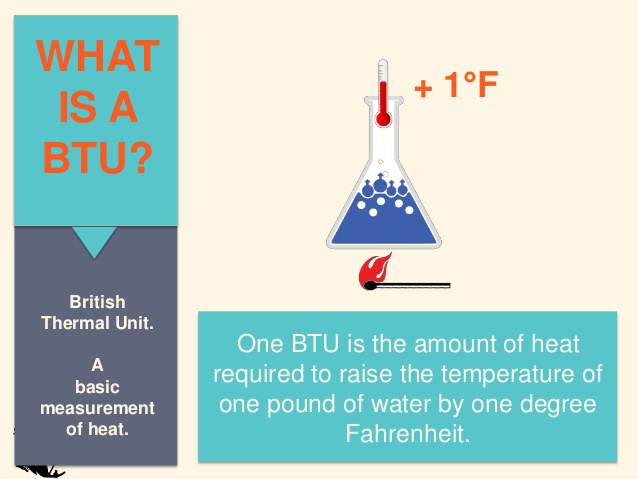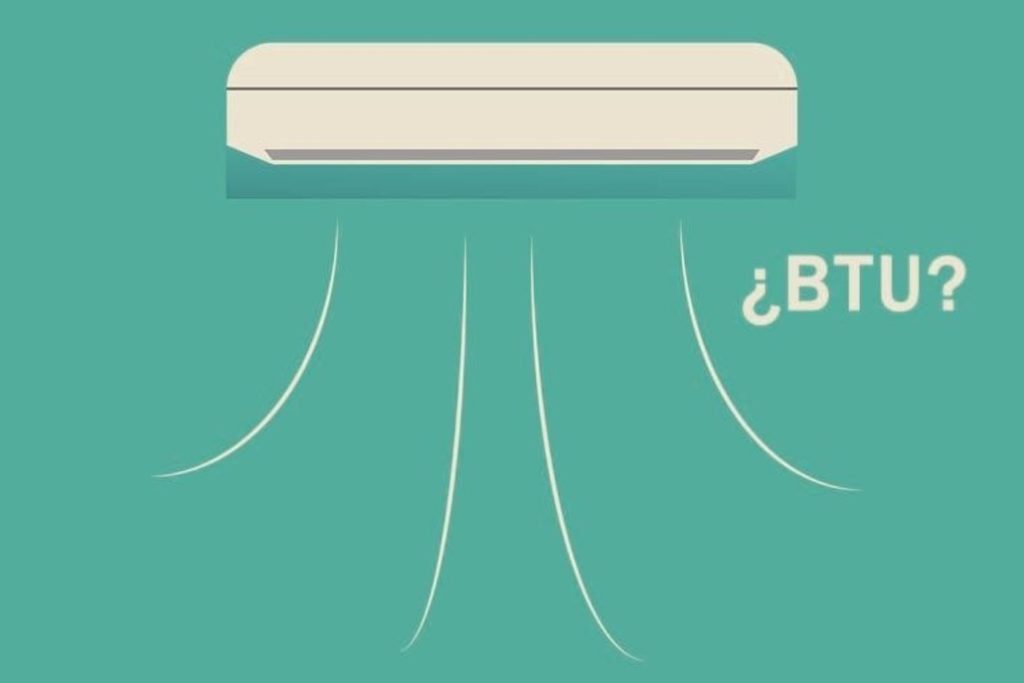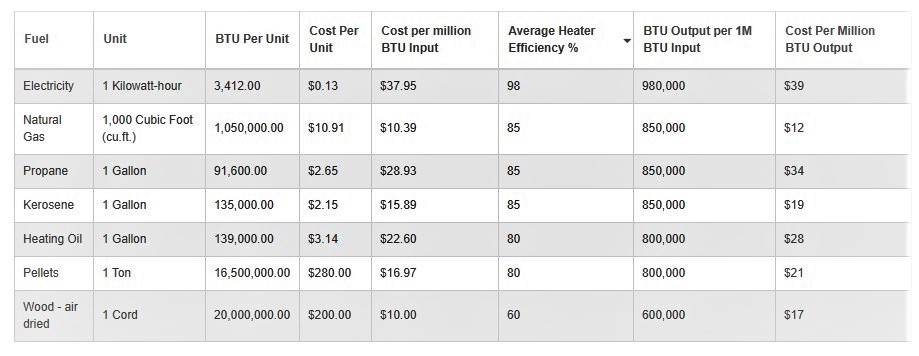While we wanna purchase an air conditioner unit or a heating unit for our home or office, we often see a very common foreign acronym “BTU” on the product specifications of most heating or cooling devices. Since it is a very important measurement for a heating or cooling system, you may notice this rating also appears in many product names like this pellet stove “Pleasant Hearth 50,000 BTU Large Pellet Stove”. You will not be able to purchase a perfect heater or air conditioner for your home if you don’t know what is BTU? What it stands for? What is the accurate BTU need to cool or heat a room?
Well, you don’t have to worry! Our chief editor, Mohiuddin Shawon, who is also a professional electrical engineer is here to help you to understand this important term. This article is written by him to assist our readers to understand this important measurement unit. And this article will cover all the essential topics to understand the term BTU and he will also teach you how to calculate it without using a BTU calculator.
Definition of BTU

The acronym of BTU stands for British Thermal Unit. It is a non-international standard unit (non-SI unit) for measuring traditional thermal energy (heat output). This unit is also listed in the United States Customary Unit which means it is a very common unit used in the United States. Since heat is equivalent to energy, the International Standard (SI) unit of heat is the Joule (which is the SI unit of energy). But, a joule is not used in the specification of heating and cooling devices since if they use the rating in Joule the value will be very large. Because according to Wikipedia one BTU is equivalent to 1055 joules. If the specification of a heating unit of 50,000 BTU is specified in joules instead of BTU, the value will be 50000 X 1055= 52,750,000, which is a very awkward and large number, isn’t it? That is why joule isn’t used in this kind of heavy machinery.
Now come back to our main topic the definition of BTU. There are several accepted definitions of BTU.
According to “Introduction to Chemical Engineering Thermodynamic” written by Smith, J. M.; Van Ness, H. C.; Abbott, M. M., British Thermal Unit (BTU) stands for the amount of heat or cool require to raise or drop the temperature of 1 pound of water at its maximum density by 1 degree Fahrenheit at a constant pressure of 1 atm.
Definition Of BTU
1 BTU is defined as the amount of energy needed to heat or cool 1 pound of normal water 1°F at sea level.
What is “1 BTU”?
Where You Will Find This BTU Unit?
Most commonly you will find this unit in the product specifications of cooling and heating appliances. But it is also used to measure the effectiveness of many other household appliances.
We have listed the most common appliance where BTU is used as a classified unit:
- Air conditioners
- Space heaters
- Solar hot water heating
- Heating fuel
- Cooking devices
- Gas fire pits
How To Measure BTU Without Any BTU Calculator
BTU formulas are very easy to understand and you can measure it by yourself. There are only two commonly used formulas to calculate the BTU. One formula is used to calculate heating BTU and the other one is used to calculate the cooling BTU.
The heating BTU measurement formula which is also known as the “Sustainable Heat” formula is:
CFM x ΔT x 1.08 = Heating BTU
The cooling BTU which is also referred to as the “Total Heat” formula is given below:
CFM x ΔH x 4.5 = Cooling Btu
After knowing both the formula we can say both of the BTU formulae have three components. Among the three components of the formula, two are identical and they are known as field components. The third component of both of the formula are different which is nothing but a constant BTU multiplier.
How To Calculate Each Component Of BTU Formula
Number 1: How to Calculate CFM of a Room?
CFM is an acronym which is known as “Cubic Feet Per Meter”. It is a very important term while you wanna calculate the BTU both cooling or heating a room. There are many methods of determining the CFM of a room, house, or whole apartment. Among them, we have highlighted the easiest method among all.
Step 1: Measure the length, width, and height of the room you wanna place an AC or a heater. Use a measuring tape to measure it most accurately.
Step 2: Multiply the values that you have measure in step 1 to determine the volume of the room.
Step 3. The next step is a bit tricky. In this step, you have to multiply the product of step 2 by the number of times you want air or heat to turn over around the whole room.
Step 4: Divide the value you found in step 3 with 60. And the result will be the ultimate CFM needed to cool or heat that room.
Number 2: How to Calculate Temperature Change (ΔH)?
The second variable that needs to calculate to apply in the BTU formula is the temperature change across the system.
When you are calculating BTU for a Heating system, you have to use a dry bulb to measure the temperature change.
In the case of the cooling system, the temperature change is measured using a wet bulb. To measure this value, you need to use will need a special kind of instrument that is capable to take reading inside your house or duct system. You can’t use the obtain wet-bulb measured value directly in the BTU formula. You must need to convert to enthalpy measurement. You can use an enthalpy chart or psychometric calculator for this task.
Number 3: How To Calculate BTU Multiplier
The third component of the BTU formula is a constant value. We have calculated this value use the below formula:
Heating BTU Multiplier = weight of standard air X the specific heat of air X minutes in an hour
Here,
The weight of standard air is equivalent to 0.075 pounds of air per CFM
Specific heat of the air is equal to 0.24 Btu per pound
And 1 hour is equal to 60 min
Cooling BTU Multiplier = weight of standard air X minutes in an hour
In this formula, the specific heat of the air is missing
What Does BTU Stand for an Air Conditioner?

The BTU that stands for an air conditioner isn’t the same as a heater. When it comes to the specification of an air conditioner unit, BTU refers to the number of heat the unit can remove from the air in a specific area per hour. Which is also specified as BTU/hr. in most of the AC units. If an AC unit is specified as 20,000 BTU per hour, it can able to remove 20,000 BTUs of heat from the air within an hour.
Different AC unit has different BTU. Below we have listed the ranges of BTU of different types of air conditioner units:
- Portable air conditioners: 8,000 – 12,000 BTU
- Split system air conditioners: 9,000 – 36,000 BTU
- Window mounted air conditioners: 3,000 – 25,000 BTU
Why BTU is So Important Picking an Air Conditioner
- If your choice an air conditioner larger than needed, it may cause the unit cool quickly and you need to cycle off and then. To maintain the desired temperature in a room you need to run a new cycle again after some time. Such kind of quick on and off may lead your air conditioner compressor overworked and overloaded very quickly. And if this kind of scenario happens very frequently, it will hamper the lifetime of the unit which can be very handy for you since the price air conditioner is not very cheap like fans.
- In case, you purchase an air conditioner that not have enough BTUs, it will not cool your room with your desired comfort which may irritate you during hot summer. In this kind of scenario, your cooling unit has to handle too much load and your unit will run continuously but it will never reach the desired temperature of your comfort. Thus, your expensive AC unit will be expired very soon.
What is the Recommended BTU Based On Square Footage?
The below BTU values are determined based on an average size room of 2 windows, 1 door, and a ceiling of 8 feet. You have to consider other variable factors like the kitchen, the height of ceilings, number of the window, etc. on your own to estimate the BTU more accurately.
| Size Of Room In Sq. Feet | BTUs Rating |
|---|---|
| 0-150 | 5,000 |
| 150-200 | 6,000 |
| 250-300 | 8,000 |
| 300-350 | 10,000 |
| 350-400 | 12,000 |
| 400-450 | 14,000 |
| 450-500 | 15,000 |
| 500-600 | 18,000 |
| 600-700 | 20,000 |
| 700-800 | 22,000 |
| 800-900 | 25,000 |
Other Factors to be Considered While Choosing Accurate BTU Air Conditioner:
- If home or apartment you like to cool become warm naturally because lots of direct sunlight enter inside the space than you have to purchase an air conditioner more powerful then your estimated BTU ratings. You have to add an extra 10% to the recommended BTUs that we listed in the table above.
- On the other hand, if the room you like to install an air conditioner unit has lots of shade or very often exposed to sunlight, you may substrate 10% of the recommended value since the room will remain cool naturally because of the shade.
- If you like to place an air conditioner inside a kitchen, then you must have to add 4,000 BTUs to our recommended cooling BTU.
- For a personal air conditioner, if the unit needs to cool more than two persons at a time than you need to add an extra 600 BTU per additional person.
- The needed BTU for your space will vary a lot if space is open not confined or closed. We have recommended the above BTU based on sq.footage for confined rooms only. This is not meant for open spaces. if the room you are willing to cool or warm is attached to another space, you must have to combine them both and count the two-room as one to determine the square footage of the space.
What Does BTU Stand for Heater and Furnaces?
For almost all heating systems, BTU is a very common but most important specification. It is often used to measure the heating efficiency of the heaters or furnaces. This rating of a heating system will help you to determine how much heat is needed to heat a room. Low BTU heating system usually meant for small size bedroom or office. Most often you may notice there are two different BTU specifications listed in the heating units – BTU input and BTU output.
The BTU input will indicate how much fuel energy the heater will consume within an hour.
On the other hand, BTU output means how much energy the heating unit converted into heat energy per hour. This is the actual heat energy you will get from your heating units. Most of the time, the BTU output isn’t specified, since the heating devices are rated by the heat it receives, which is known as BTU input, not the amount of BTU it actually produces or generates.
The formula to calculate the BTU output is:
BTU Output = (Input BTU x Efficiency %)/100
So to determine the BTU output of the heater, you also need to know the efficiency of your heating unit. Otherwise, you will not be able to calculate the BTU output of the heating unit. Most of the time BTU output is not specified on the electric heater or furnaces. At that time, you need to calculate BTU Output using the above formula.
How to Determine the Correct BTU?
To determine the appropriate BTU for your space, the first thing you have to do is to calculate how much space you have to warm. Below we have discussed the measurement procedure to measure some of the common shape rooms.
- Rectangular Room. Measure the length and width of the rectangular room with measurement tape. After that multiply both to get your space measurement in square footage.
- Triangle room. If your space is triangular in shape than you have to measure the length and width of that room, multiply both of the units and divide the product by 2.
After the calculation of the room, you have to multiply the value with the below factor for a rough estimation of BTU.
| Type Of Room | Multiplier Factor |
|---|---|
| Bedrooms | Multiply Cubic Feet by 4 |
| For Double Glazing | Deduct 10% |
| For French Windows | Add 20% |
| For Rooms Facing North | Add 15% |
| Kitchen or Common Room | Multiply Cubic Feet by 3 |
| Lounges and Dining Rooms | Multiply Cubic Feet by 5 |
BTU Chart for Certain Size Space
Below are the average BTU range required for a specific size room:
| Room Size (In Sq. Ft) | Average BTU Range |
|---|---|
| 1200 | 36,000 to 72,000 BTUs |
| 1500 | 45,000 to 90,000 BTUs |
| 1800 | 54,000 to 108,000 BTUs |
| 2100 | 63,000 to 126,000 BTUs |
| 2400 | 72,000 to 144,000 BTUs |
Cost Per Million BTU for Different type of Heating Fuels
Running a heating system isn’t cheap at all. If you choose a heater that fuel cost is very high and the maintenance is very costly then it will really burn you very hard in different ways. There are different types of heater available in the market and each can be classified by use of fuel. Some heater uses oil, some use natural gas, some use wood, and some use electricity. Each fuel type will cost differently.
On the chart below, we will show you the Cost Per Million BTU for Different types of Heating Fuels.

Other Factor to Consider:
- If your house has a large number of windows than heat will easily escape from the room. So, you have to choose a heater with higher than your estimated value.
- For the kitchen, you have to add an extra 4000 BTU with yours determine BTU number.
- If the room you are going to place the heater lives more than one person, it will require less BTUs heater. Deduce 400 BTU from your estimate BTU value for every additional person, since the human body releases heat into the room.
- If the ceiling of your apartment is high enough then you may need more BTU for comfortable warm
- Having a ceiling fan in the room can help you to lower the BTU ratings
- Newer houses or apartments particularly have better insulation. Thus it requires lower BTUs.
- Dark color room and ceiling absorb more heat of the sun than a light color. Thus, it also changes the requirement of BTUs more significantly.

